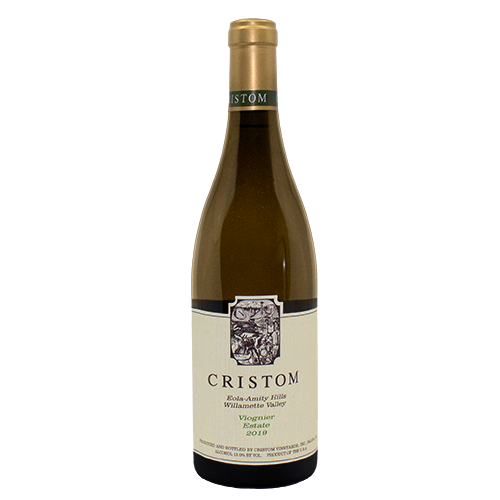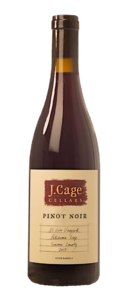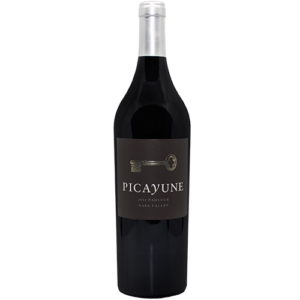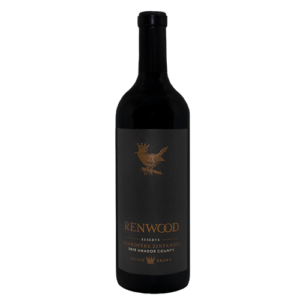The People
Cristom Vineyards was established in 1992 by the Gerrie family to grow and craft distinguished wines that honor individual sites and old-world techniques. Family-owned thirty years later, they remain stewards of their east-facing volcanic hillside in the Eola-Amity Hills, focused on growing benchmark Pinot Noir and Chardonnay.
Despite growing up in the Willamette Valley, co-winemaker Daniel Estrin had no early exposure to wine until 2000 when his car broke down in LA, and he took a job stocking shelves at The Wine House. In July 2019, Daniel returned to his Oregon roots with his wife and two pups to work for Cristom. Steve Doerner did not expect winemaking to find him as he pursued his Biochemistry degree at U.C. Steve was hired to help make Calera’s first Pinot Noir Vintage in 1978. After several years, Steve took over the winemaking duties and, ultimately, spent 14 years honing his craft at Calera Vineyards. In 1992, Paul convinced Steve to head north to Oregon and start the story of Cristom Vineyards.
The Juice
Cristom was the first winery to produce an estate bottling of Viognier with their 1996 vintage release. Their skill and expertise are evident in the quality of this bottle. The use of whole clusters is at the heart of the Cristom winemaking style. The effects of utilizing whole clusters are vast and reflective of the vineyard and the vintage. Whole clusters bring another level of complexity to the aromatics and an additional dimension of tannin to the palate and help the wines better express their terroirs’ identity.
Whole cluster fermentations can produce a dynamic and expansive range of spicy aromatics like crushed pepper, cloves, cardamom, and cinnamon, herbaceous notes of tobacco and black tea, and earthy aromas reminiscent of the forest floor. With more whole berries staying intact, the whole cluster brings a natural carbonic fermentation effect to the resulting wine, furthering aromatic complexity. An ancient technique, the stems can provide additional tannin to the structure of the wine, allowing for greater age ability.
Their choice to include whole bunches depends on the specific site, the growing season, and the age of the vines. The winemakers typically destem roughly half of the fruit. The estate single vineyard wines are between 40%-50% whole clusters in the final blends, contributing to the depth and purity of the wines. In addition to using whole clusters, the Cristom team incorporates many winegrowing and agricultural paradigms – organic and biodynamic farming principles, agro-ecology, permaculture, and integrative pest management methods – to enrich the soil and enhance fruit quality.
The Dirt
The effects of the cooling marine winds off the Pacific Ocean and the dynamic range of volcanic soils that span the island hill chain in the heart of the Willamette Valley help to define the wines of the Eola-Amity Hills. The lava flows that formed over millennia during the Columbia River Basalt flows on Cristom Vineyards’ east-facing hillside range from just over 18 inches of topsoil to more than ten feet, creating differences in the wines that are planted mere feet apart – allowing for extraordinary site expression.
The roaring winds that funnel through the Van Duzer corridor, the lowest point in Oregon’s Coast Range and due west of Cristom, help to cool the vines down at night and preserve bright acidity and fruit aromatics. The winds can be fierce, with gusts up to 25 mph, helping to drop the daytime temperature by more than 35˚F during the growing season. These high winds translate to cooler temperatures in the Eola-Amity Hills, allowing the fruit more time to hang on the vine while retaining bright acidity.
The Taste
The Cristom Estate Viognier exhibits the pure, nearly textbook characteristics of this varietal – which is no surprise, considering their status as one of Viognier’s first and biggest producers. On the nose, expect floral aromas of orange blossoms, honeysuckle, clover, anise, and ripe fruit aromas of peach, apricot, and lychee. Slightly dense on the palate, with bright and mouth-watering acidity that supports the fruit structure of the wine, it is well-integrated and perfectly balanced. The crisp flavors of this label would best complement fish or poultry.
The Spill
In my line of work outside of exploring the world of wine, I know too well that having a vision is a crucial part of any venture. Many vineyards and wineries will declare that they are driven to continue producing good-tasting wine. This is where I find that Cristom is special. At Cristom Vineyards, there is so much more than a goal to keep going; there is a consideration with every decision about what it will mean for the next hundred years. Because nurturing the land is a significant part of their approach, they incorporate sustainable practices and ensure that it continues to thrive well into the future – whether they’re still there or not.
At Cristom, they think in terms of centuries; their team is led by a commitment to what the land and company will be one hundred years from now. The daily decisions are guided by the belief that the value and outcome of their work will last beyond their lifetimes. Cristom seeks to build an enduring brand known first for a special piece of wine-growing land that sustains far beyond a human working lifetime. Their wines are a product of several uniquely driven individual lifetimes and interpretations of land, craftsmanship governed by a handful of values and principles carefully nurtured over time.







![Chasing Rain[3] | Blurred Vines](https://blurred-vines.com/wp-content/uploads/2021/12/Chasing-Rain3-105x300.png)